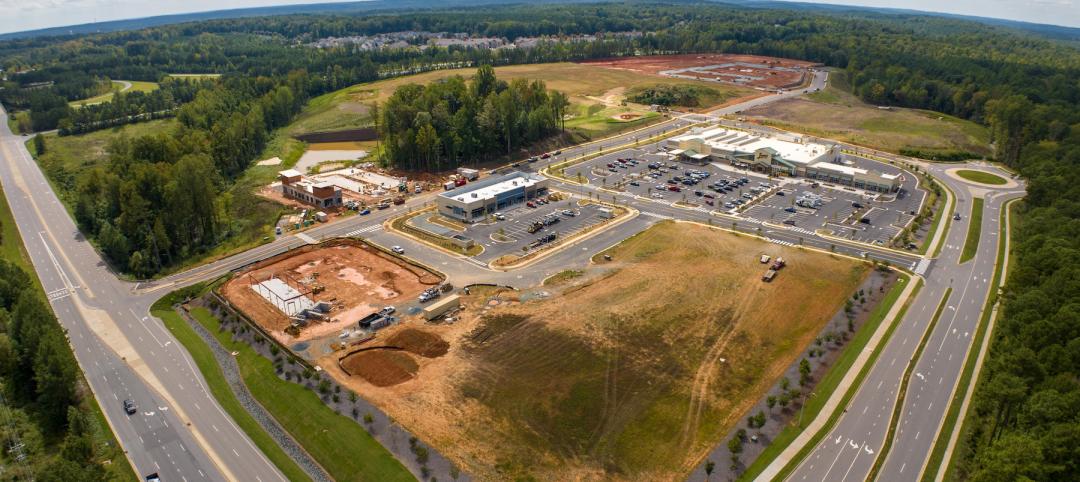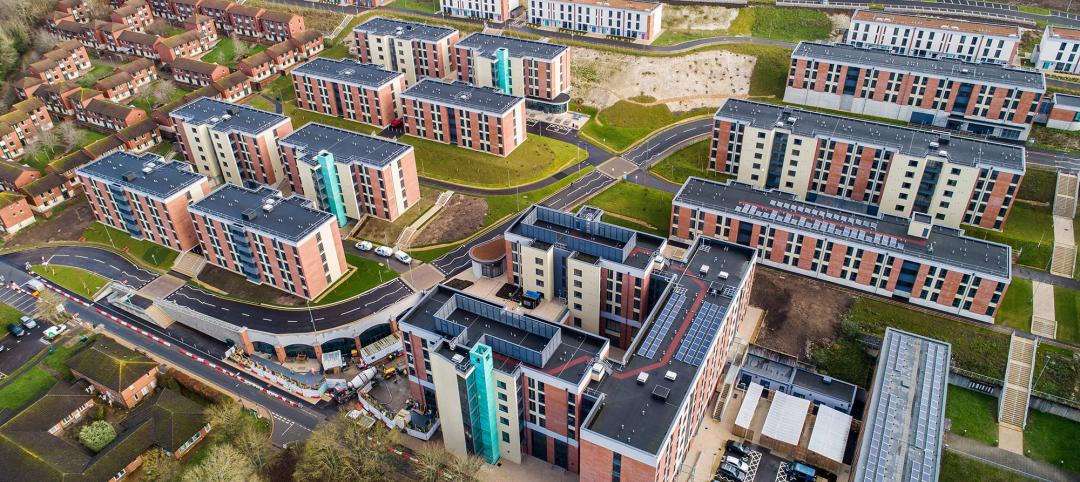In the late 1980s, an African-American neighborhood in St. Petersburg, Fla., known as the Historic Gas Plant District, was the victim of displacement by the city to make way for the construction of the Tropicana Field stadium.
Fast forward to September 19 of this year, when the Tampa Bay Rays Major League Baseball team announced that it had reached an agreement with St. Petersburg and Pinellas County on a $6.5 billion, 86-acre mixed-use development that will include a new 30,000-seat ballpark and an array of office, housing, hotel, retail, and restaurant space totaling 8 million sf. (The stadium will be between 850,000 and 950,000 sf.)
The first phase of this project’s 20-year buildout is scheduled to begin construction late next year and be completed by opening day of the 2028 baseball season.
The developer Hines, through its Historic Gas Plant Partnership, is the master developer on this project, which will occur on land currently occupied by Tropicana Field. Hines’ involvement includes a $50 million commitment to equity initiatives with South St. Petersburg that encompass affordable housing, employment and business support, education programs, and minority/women owned business enterprise hiring.
Part of Entertainment District trend
This project can be placed within a larger development trend for entertainment districts that are proliferating around the country. Among the metros where entertainment districts have been proposed, or are currently under construction, are Miami, Gainesville, and Pompano Beach, Fla.; Kansas City and St. Louis, Mo.; Anaheim, Calif.; Norman, Okla.; Clarksville, Tenn., and Springdale, Ark. In many cases, as in St. Petersburg, these districts are positioned as vital pieces of larger urban revitalization and economic growth campaigns.
The St. Petersburg project, when it’s completed, will increase the number affordable housing units built by the Partnership to 1,200, with at least half of those units to be built within the redeveloped district.
The project will include 4,800 market-rate housing units, 600 senior-living units, 1.4 million sf of office and medical space, 750,000 sf of retail, 750 hotel rooms, 100,000 sf of performance/event space that include a 3,000- to 4,000-seat concert hall; 100,000 sf of conference and meeting space, 50,000 sf of cultural and community space that encompasses the Carter G. Woodson African American Museum of Florida; 14 acres of public open space, and 14,000 parking spaces.
The Rays will pay more than half of the $1.3 billion cost to build the new ballpark, and the city and county will contribute an aggregate $600 million.
“Hines … is honored to bring this transformative, city-defining project to life,” said Michael Harrison, Senior Managing Director with Hines, in a prepared statement. “Our goal is to create St. Petersburg’s next great place to live, work, and play.”
The public approval process by the city and county is expected to start this fall.
Tampa Bay Rays, Hines finalize stadium-anchored multiuse district in St. Petersburg, Fla.
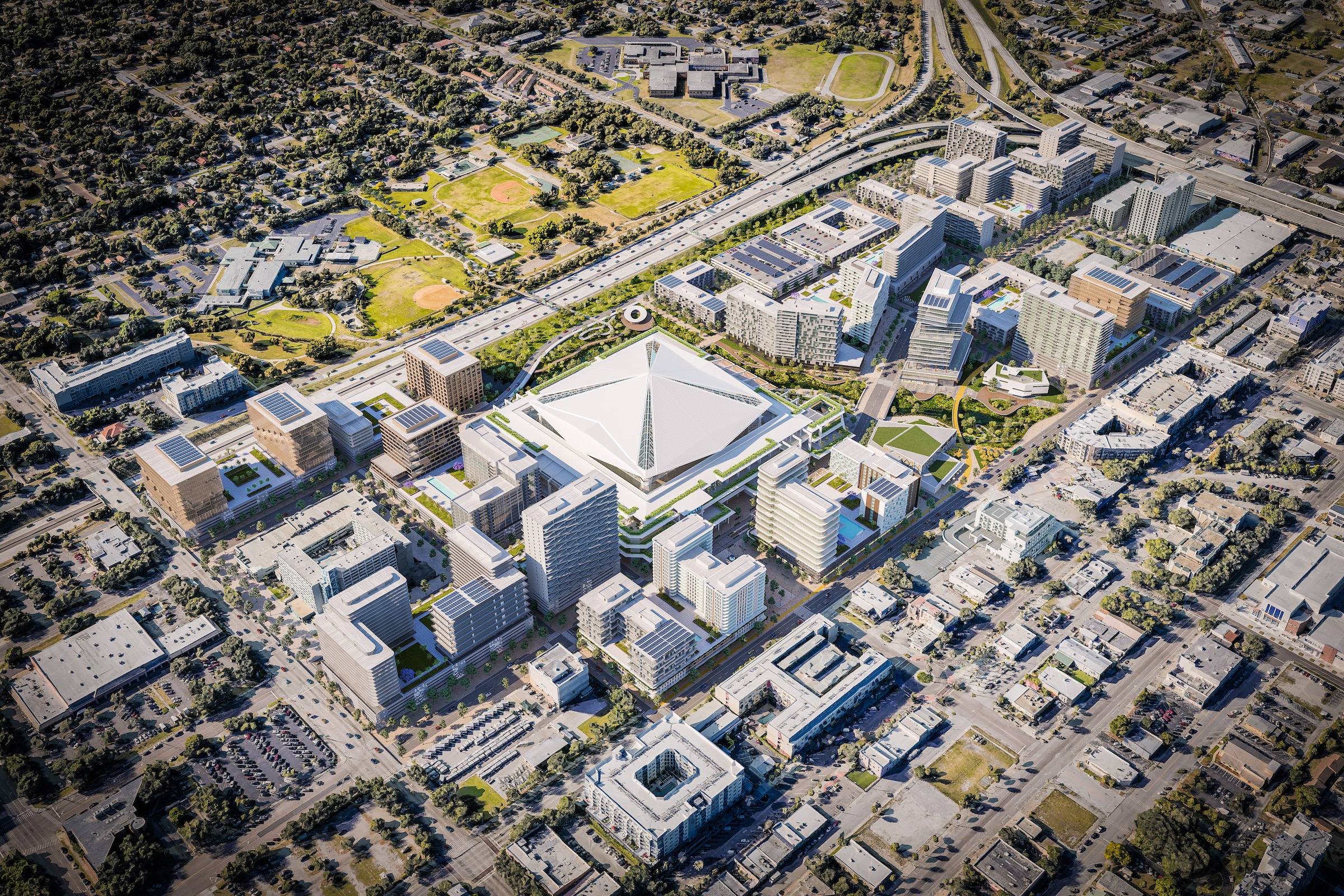
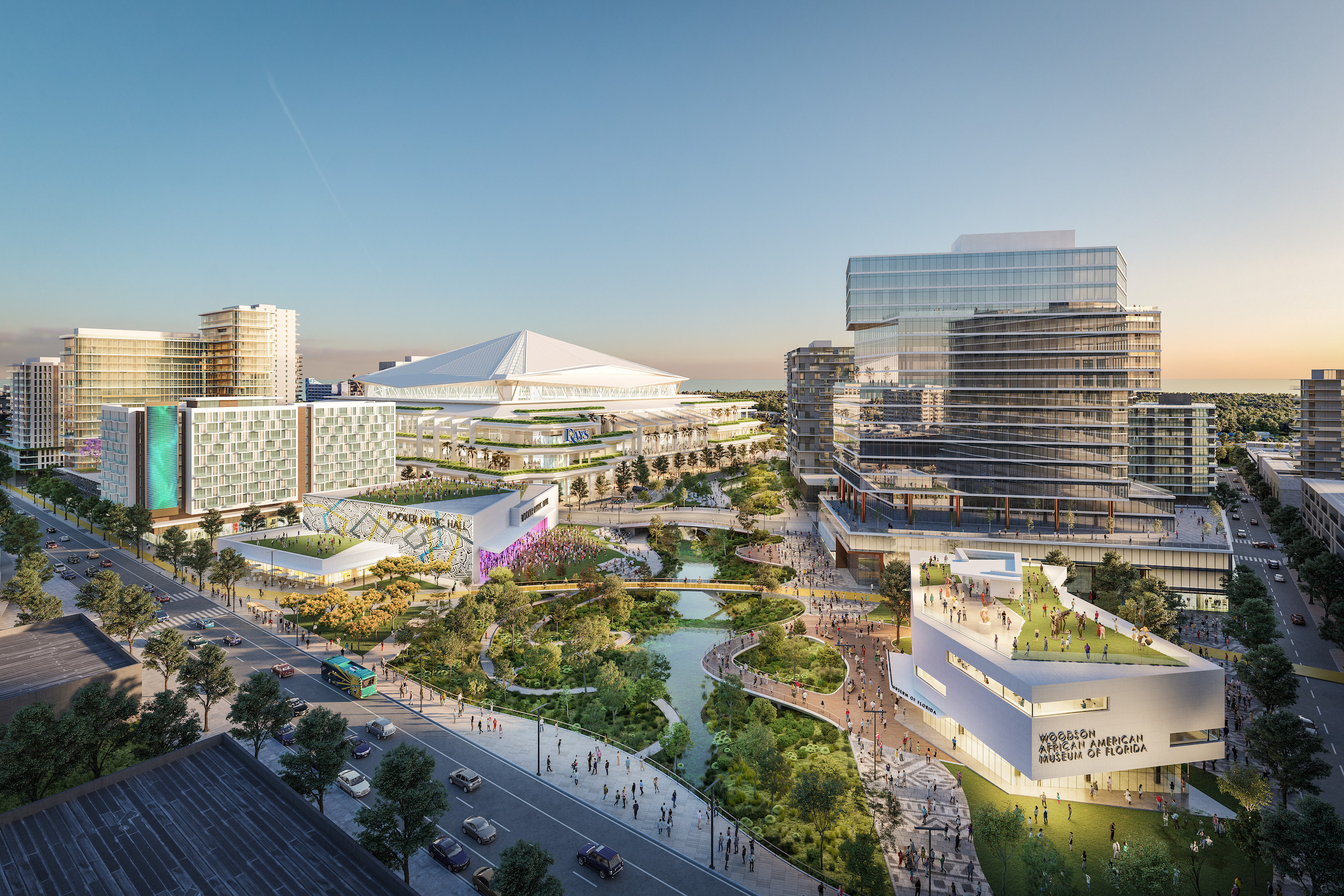

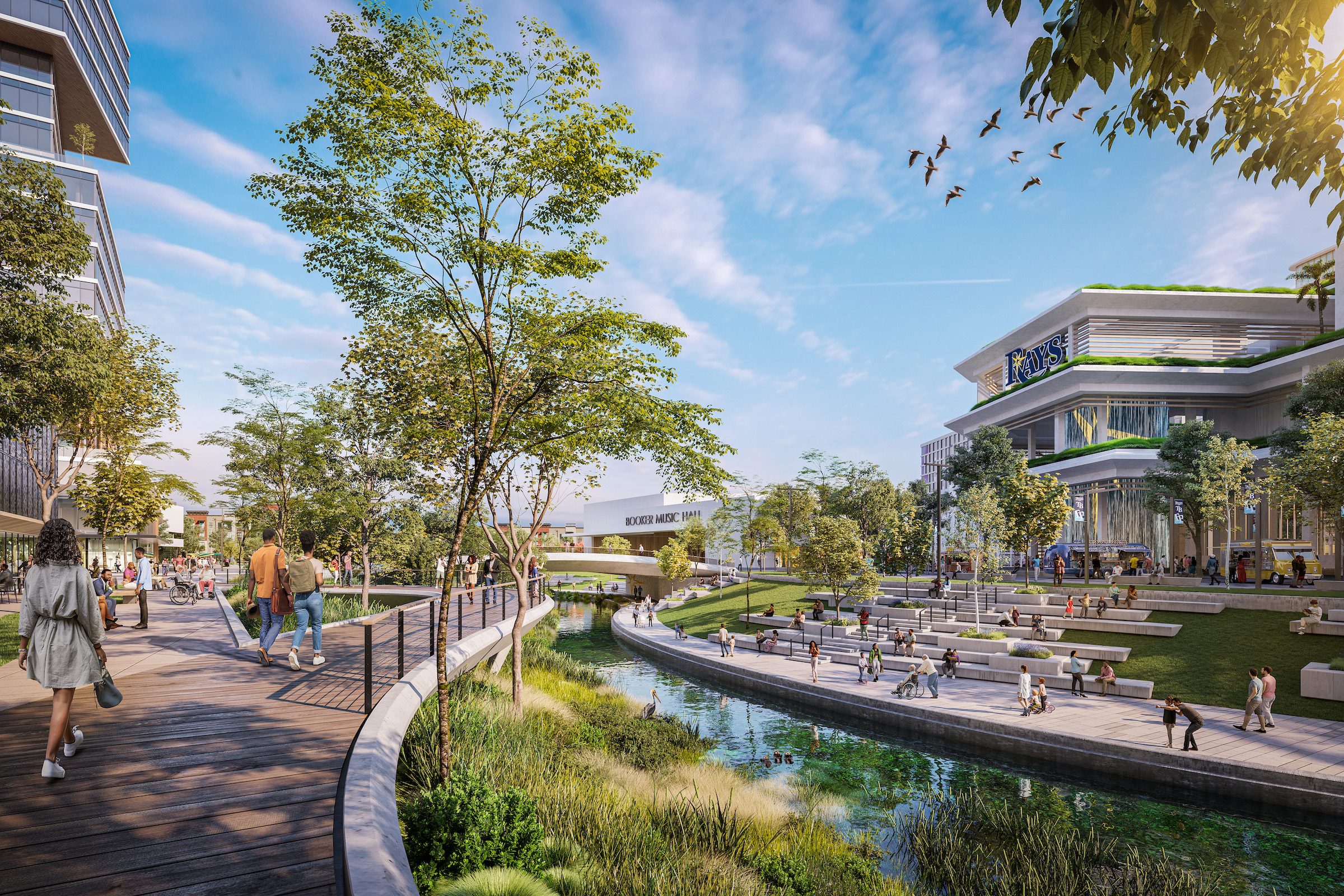
Related Stories
Mixed-Use | Oct 5, 2023
Mixed-use pieces supporting a master plan in North Carolina fall into place
Near Chatham Park, a new multifamily housing community follows the opening of a shopping center.
Contractors | Sep 25, 2023
Balfour Beatty expands its operations in Tampa Bay, Fla.
Balfour Beatty is expanding its leading construction operations into the Tampa Bay area offering specialized and expert services to deliver premier projects along Florida’s Gulf Coast.
Adaptive Reuse | Sep 19, 2023
Transforming shopping malls into 21st century neighborhoods
As we reimagine the antiquated shopping mall, Marc Asnis, AICP, Associate, Perkins&Will, details four first steps to consider.
Resort Design | Sep 18, 2023
Luxury resort provides new housing community for its employees
The Wisteria community will feature a slew of exclusive amenities, including a market, pub, and fitness center, in addition to 33 new patio homes.
Adaptive Reuse | Aug 31, 2023
Small town takes over big box
GBBN associate Claire Shafer, AIA, breaks down the firm's recreational adaptive reuse project for a small Indiana town.
Giants 400 | Aug 22, 2023
Top 115 Architecture Engineering Firms for 2023
Stantec, HDR, Page, HOK, and Arcadis North America top the rankings of the nation's largest architecture engineering (AE) firms for nonresidential building and multifamily housing work, as reported in Building Design+Construction's 2023 Giants 400 Report.
Giants 400 | Aug 22, 2023
2023 Giants 400 Report: Ranking the nation's largest architecture, engineering, and construction firms
A record 552 AEC firms submitted data for BD+C's 2023 Giants 400 Report. The final report includes 137 rankings across 25 building sectors and specialty categories.
Giants 400 | Aug 22, 2023
Top 175 Architecture Firms for 2023
Gensler, HKS, Perkins&Will, Corgan, and Perkins Eastman top the rankings of the nation's largest architecture firms for nonresidential building and multifamily housing work, as reported in Building Design+Construction's 2023 Giants 400 Report.
Adaptive Reuse | Aug 17, 2023
How to design for adaptive reuse: Don’t reinvent the wheel
Gresham Smith demonstrates the opportunities of adaptive reuse, specifically reusing empty big-box retail and malls, many of which sit unused or underutilized across the country.
Sustainability | Aug 15, 2023
Carbon management platform offers free carbon emissions assessment for NYC buildings
nZero, developer of a real-time carbon accounting and management platform, is offering free carbon emissions assessments for buildings in New York City. The offer is intended to help building owners prepare for the city’s upcoming Local Law 97 reporting requirements and compliance. This law will soon assess monetary fines for buildings with emissions that are in non-compliance.



